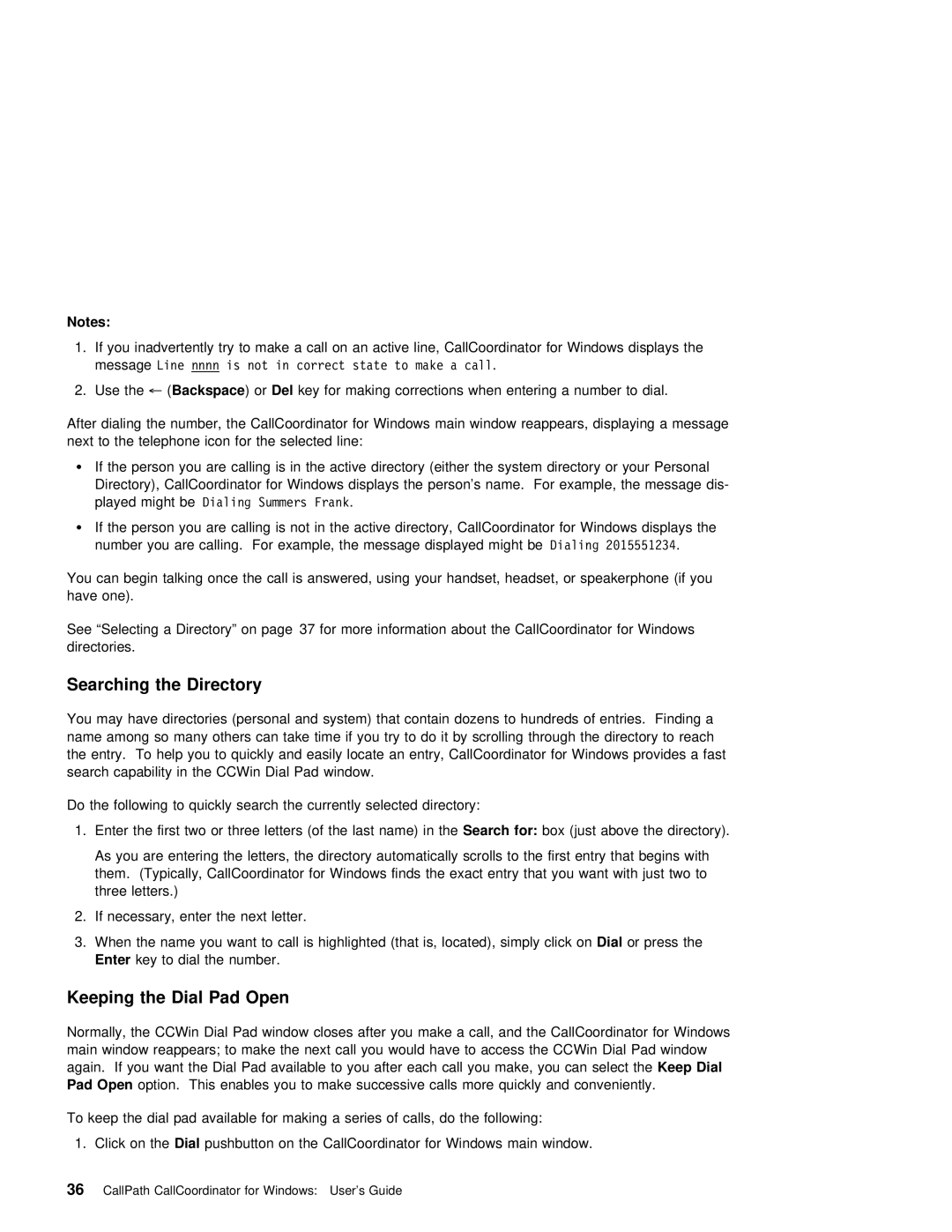Notes:
1.If you inadvertently try to make a call on an active line, CallCoordinator for Windows displays message Line nnnn is not in correct state to make a call.
2. Use | ←theBackspace( | ) | orDel | key | for making corrections when entering | a number to | dial. | |||
After | dialing | the | number, | the | CallCoordinator for | Windows main window | reappears, | displaying a message | ||
next | to | the | telephone | icon for the selected | line: |
|
| |||
¹If the person you are calling is in the active directory (either the system directory or y Directory), CallCoordinator for Windows displays the person’s name. For example, the message dis- played might Dialingbe Summers Frank.
¹ If the person you are calling | is | not in the | active directory, | CallCoordinator | for Windows | displa | ||||
number | you | are calling. For | example, | the message displayedDialing 2015551234might be. |
|
| ||||
You | can | begin | talking once the | call | is | answered, | using your handset, | headset, or | speakerphone | (if |
have | one). |
|
|
|
|
|
|
|
| |
See “Selecting a Directory” on page 37 for more information about the CallCoordinator for Windows directories.
Searching | the | Directory |
|
|
|
|
|
|
|
|
|
|
|
|
|
|
|
|
You may have directories (personal | and | system) | that | contain | dozens | to hundreds | of | entries. Finding |
| |||||||||
name among | so many | others | can | take | time | if you | try | to | do | it | by | scrolling | through | the | directory | t | ||
the entry. To help you to quickly | and | easily locate | an | entry, | CallCoordinator | for | Windows | provides | a | |||||||||
search | capability | in the | CCWin | Dial | Pad | window. |
|
|
|
|
|
|
|
|
|
|
| |
Do the following to quickly search the currently selected directory:
1. Enter | the | first two or | three | letters | (ofSearchthefor: lastbox name)(justin | abovethe | the directory). |
|
| |||||||||||
| As you are entering the | letters, the | directory | automatically | scrolls | to | the | first entry | that | b | ||||||||||
| them. (Typically, CallCoordinator for Windows finds | the | exact | entry that | you | want | with just | two | t | |||||||||||
| three | letters.) |
|
|
|
|
|
|
|
|
|
|
|
|
|
|
|
|
| |
2. | If | necessary, | enter | the | next | letter. |
|
|
|
|
|
|
|
|
|
| ||||
3. | When | the | name | you | want | to | call | is highlighted | (that | is,Dial | located),or presssimplythe click | on |
|
| ||||||
| Enter | key | to dial | the | number. |
|
|
|
|
|
|
|
|
|
|
|
| |||
Keeping the Dial Pad Open
Normally, the CCWin Dial Pad window | closes | after | you | make | a | call, | and the CallCoordinator for Windows | |||
main window reappears; to make the next | call | you would have | to | access | the CCWin Dial Pad window | |||||
again. If | you want the Dial Pad | available | to | you | after | each | callKeep youDial make, you can select the | |||
Pad Open | option. This enables you | to make | successive | calls | more | quickly | and conveniently. | |||
To keep the dial pad available for making a series of calls, do the following:
1. Click on theDial pushbutton on the CallCoordinator for Windows main window.
